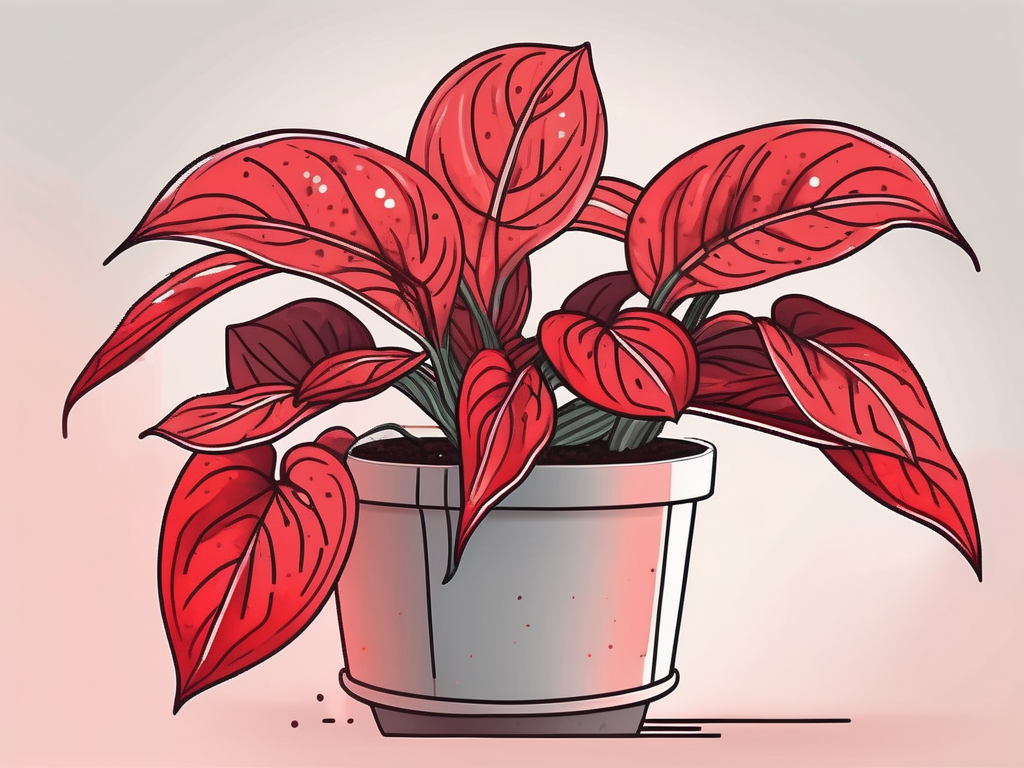
If you're a plant lover who appreciates the charm of a snake plant, you've likely wondered how to keep it thriving. Snake plants, known for their striking upright leaves and resilience, are a favorite among many for their low-maintenance nature. However, like any living thing, they benefit from a little extra care now and then, particularly when it comes to fertilization.
This article will walk you through everything you need to know about fertilizing your snake plant. From understanding why fertilization matters to choosing the right type of fertilizer and knowing when and how to apply it, we've got you covered. Let's dive into the world of snake plant care and set your leafy friend on the path to optimal growth.
Why Fertilize Your Snake Plant?
Fertilizing your snake plant might seem like an optional step, especially considering how forgiving these plants can be. However, if you're aiming for vibrant, healthy growth, fertilizers can make a significant difference. But why exactly do snake plants need fertilization?
Snake plants are relatively slow growers, but they do require nutrients to maintain their health. In their natural environment, they absorb nutrients from the soil, but when potted indoors, these nutrients can become depleted over time. Fertilizers help replenish these essential nutrients, promoting new growth and maintaining the plant's health and appearance.
Think of fertilizer as a multivitamin for your plant. It provides the necessary elements like nitrogen, phosphorus, and potassium, along with trace minerals that keep your snake plant in top shape. While they can survive without it, regular feeding helps ensure they're not just surviving but thriving.
If you've noticed your snake plant isn't growing as robustly as you'd like, or the leaves are losing their vibrant color, it might be time to consider fertilization. Even though these plants are hardy, a little extra nourishment can go a long way in preventing common issues like stunted growth or yellowing leaves.
Choosing the Right Fertilizer
When it comes to selecting a fertilizer for your snake plant, you'll find there are quite a few options available. The key is to choose one that provides a balanced mix of nutrients suitable for your plant's needs.
Most plant people will recommend a balanced liquid fertilizer, such as a 10-10-10 or 20-20-20 formulation. These numbers represent the ratio of nitrogen, phosphorus, and potassium, which are the primary nutrients plants require. A balanced fertilizer ensures your snake plant receives equal parts of these essential nutrients.
Organic fertilizers are another option, often preferred by those who like to keep things natural. These fertilizers are derived from natural sources and can be less harsh on your plant's roots. They typically release nutrients slowly, providing a more consistent feeding over time.
Here are a few tips for choosing the right fertilizer:
- Consider your plant's environment: If your snake plant is in a low-light area, it might not need as much fertilizer as one in a bright, sunny spot.
- Read the labels: Look for fertilizers specifically labeled for houseplants, as they're more likely to suit your snake plant's needs.
- Start light: If you're unsure, begin with a diluted solution and gradually increase the strength if needed.
Ultimately, the best fertilizer is one that fits your plant's living conditions and your personal preferences. Whether you opt for organic or synthetic, the key is to provide a steady supply of nutrients that will support healthy growth.
When to Fertilize Your Snake Plant
Timing is everything when it comes to fertilizing snake plants. These plants have specific growth periods when they're more receptive to feeding, and knowing when to fertilize can make all the difference.
Snake plants typically enter their active growth phase during the warmer months, from spring to early fall. This is the ideal time to start fertilizing, as the plant will use the extra nutrients to support new growth. During the winter months, snake plants enter a dormant phase, and fertilization should be reduced or stopped altogether. Feeding during this time can lead to fertilizer burn or even root damage, as the plant isn't actively using the nutrients.
Here are some general guidelines for fertilizing your snake plant:
- Spring and Summer: Fertilize every 4-6 weeks with a balanced liquid fertilizer.
- Fall: Begin to taper off fertilization as the growth slows down.
- Winter: Avoid fertilizing unless your plant shows clear signs of nutrient deficiency.
Remember, these are just guidelines. The specific needs of your plant can vary based on its environment and health. Always observe your plant and adjust your fertilization routine accordingly. If in doubt, err on the side of caution and use less fertilizer rather than more.
How to Apply Fertilizer
Now that you know when to fertilize, let's talk about how to do it properly. Applying fertilizer might seem straightforward, but there are a few tips and tricks that can help ensure you're feeding your snake plant effectively.
First, always read the instructions on your fertilizer's label. This will give you specific dilution rates and application methods that are best for your particular product. Generally, you'll want to dilute liquid fertilizers with water before applying them to your plant.
Here's a step-by-step guide to fertilizing your snake plant:
- Water your plant: Begin by giving your snake plant a thorough watering. This helps prevent root burn and ensures that the fertilizer is evenly distributed.
- Mix the fertilizer: Following the instructions on the label, mix the appropriate amount of fertilizer with water. It's usually better to err on the side of a weaker solution, especially if you're new to fertilizing.
- Apply the fertilizer: Pour the fertilizer mixture evenly over the soil, being careful to avoid getting it on the leaves. Focus on the base of the plant where the roots can access the nutrients.
- Monitor your plant: After fertilizing, keep an eye on your snake plant for any signs of stress or over-fertilization, such as yellowing leaves or wilting. If you notice any issues, reduce the frequency or strength of your fertilizer.
Fertilizing is an ongoing process, and it's important to adjust your approach based on how your plant responds. Regular observation and slight tweaks will help you find the perfect balance for your snake plant.
Signs Your Snake Plant Needs Fertilizing
Even with a solid fertilizing routine, it's helpful to know what signs indicate your snake plant might need a nutrient boost. Snake plants are pretty communicative when it comes to their health, and a few key indicators can tell you when it's time to reach for the fertilizer.
One of the most common signs is slow or stunted growth. If your snake plant isn't putting out new leaves or seems to be growing at a snail's pace, it could be lacking in nutrients. Similarly, if the leaves are looking less vibrant or are losing their characteristic green color, this might suggest a nutritional deficiency.
Other signs to watch for include:
- Yellowing leaves: While some yellowing is normal, especially for older leaves, widespread yellowing can indicate a nutrient deficiency.
- Brown leaf tips: This can be a sign of over-fertilization, but it can also occur when the plant isn't getting enough of certain nutrients.
- Leaf curling or wilting: Nutrient imbalances can cause the leaves to curl or wilt, especially in conjunction with other stressors like improper watering.
If you notice any of these signs, a careful review of your fertilization routine might be in order. Adjusting the frequency or type of fertilizer you use can often help address these issues and get your snake plant back on track.
Common Mistakes and How to Avoid Them
Fertilizing snake plants isn't rocket science, but there are a few common mistakes that even seasoned plant people can make. Recognizing these pitfalls can save you a lot of trouble down the line and keep your plant in peak condition.
One of the biggest mistakes is over-fertilizing. It's easy to think that more fertilizer equals more growth, but this isn't the case. Over-fertilizing can lead to nutrient burn, where the leaves become scorched and damaged. It's important to stick to a schedule and use the recommended amounts to avoid this issue.
Another common mistake is fertilizing during the dormant winter months. While it might be tempting to give your plant a boost, it's better to let it rest and save the fertilization for its active growth period. Feeding during dormancy can lead to root damage and other health issues.
Here are a few tips to avoid these and other common mistakes:
- Use the right fertilizer: Make sure you're using a houseplant-appropriate fertilizer and follow the dilution instructions carefully.
- Monitor your plant's response: Keep an eye on your snake plant after fertilizing to catch any signs of over-fertilization or nutrient burn early.
- Adjust as needed: If your plant isn't responding well to fertilizer, don't be afraid to change your approach. Every plant is unique, and finding the right balance can take some trial and error.
By avoiding these mistakes and staying attentive to your plant's needs, you can ensure that your snake plant remains healthy and vibrant for years to come.
Organic vs. Synthetic Fertilizers
When it comes to fertilizing your snake plant, you have two main options: organic or synthetic fertilizers. Each has its own set of pros and cons, and the best choice often depends on your personal preferences and your plant's specific needs.
Organic fertilizers are derived from natural sources, such as compost, manure, or plant-based substances. They're often favored by plant people who prefer a more natural approach to plant care. Organic fertilizers tend to release nutrients more slowly, which can be beneficial for maintaining a steady supply of nutrients over time. However, they can be less concentrated than synthetic fertilizers, meaning you might need to apply them more frequently.
Synthetic fertilizers, on the other hand, are chemically formulated to provide a precise balance of nutrients. They're often more concentrated and can provide a quick nutrient boost to plants in need. However, they can also be harsher on your plant's roots, and there's a greater risk of over-fertilization if not used carefully.
Here's a quick rundown of the benefits of each type:
- Organic Fertilizers:
- Environmentally friendly
- Slow-release, providing steady nutrition
- Improves soil health over time
- Synthetic Fertilizers:
- Quick and effective nutrient delivery
- Easy to find and often more affordable
- Precise nutrient ratios
Ultimately, the choice between organic and synthetic fertilizers comes down to your personal preferences and what you feel is best for your snake plant. Both types can be effective when used correctly, so it's worth experimenting to see which works best for your plant and your lifestyle.
How Often Should You Fertilize?
Determining how often to fertilize your snake plant can depend on several factors, including the type of fertilizer you're using and the specific needs of your plant. While there's no one-size-fits-all answer, there are some general guidelines that can help you establish a routine.
During the active growing season, which typically runs from spring through early fall, snake plants can benefit from regular fertilization. A balanced liquid fertilizer applied every 4-6 weeks is usually sufficient to support healthy growth. If you're using an organic fertilizer, you may need to apply it more frequently, as these tend to be less concentrated.
In the fall, as your snake plant begins to slow its growth, you can start to taper off your fertilization schedule. By winter, it's best to stop fertilizing altogether, allowing your plant to rest during its dormant period.
Here are some tips to help you determine the right fertilization frequency for your snake plant:
- Observe your plant: Keep an eye on your plant's growth and appearance. If it's healthy and growing well, your current schedule is likely working.
- Adjust as needed: If your plant shows signs of nutrient deficiency, consider increasing the frequency or strength of your fertilizer.
- Consider your environment: Factors like light, temperature, and humidity can affect your plant's nutrient needs, so adjust your schedule based on its living conditions.
Remember, it's always better to start with a lighter touch and gradually increase fertilization as needed. With a little observation and adjustment, you can find the perfect schedule to keep your snake plant thriving.
Alternative Feeding Options
While traditional fertilizers are the most common way to feed your snake plant, there are alternative methods that some plant lovers swear by. These options can be particularly appealing if you're looking for a more natural or low-maintenance approach to plant care.
One popular alternative is compost tea, a nutrient-rich brew made by steeping compost in water. This liquid gold can be used to water your plants, providing a gentle, organic nutrient boost. Compost tea is easy to make at home and can be a great way to recycle kitchen scraps and yard waste.
Another option is using worm castings, often referred to as "nature's fertilizer." Worm castings are nutrient-dense and can be mixed into your potting soil or used as a top dressing. They're an excellent source of slow-release nutrients and can help improve soil structure and moisture retention.
Here are a few other alternative feeding options to consider:
- Fish emulsion: A liquid fertilizer made from fish waste, rich in nitrogen and other nutrients.
- Eggshells: Crushed eggshells can provide a slow-release source of calcium, which can benefit your snake plant's overall health.
- Banana peels: Soaking banana peels in water creates a potassium-rich liquid that can be used to water your plants.
While these alternative methods might not replace traditional fertilizers entirely, they can be a great supplement to your regular feeding routine. Experimenting with different options can help you find what works best for you and your snake plant.
Final Thoughts
Fertilizing your snake plant is a wonderful way to support its growth and keep it looking its best. By understanding the importance of nutrients, choosing the right fertilizer, and applying it correctly, you can ensure your plant continues to thrive. Remember, every plant is unique, and a little observation can go a long way in finding the perfect routine.
At Cafe Planta, we love helping you care for your plants. Whether you're looking for a new addition to your collection or need advice on plant care, we're here for you. Feel free to reach out to us via email or DM us on Instagram. We believe plants have the power to bring people together, and we're excited to share our passion with you.
























